List of amphibians of the United States facts for kids
Amphibians are amazing creatures that can live both in water and on land! They include animals like frogs, toads, and salamanders. In the United States, scientists have found a total of 306 different amphibian species. Sadly, 2 of these species are now extinct, meaning they no longer exist. This list comes from a big database called "Amphibian Species of the World."
Salamanders (Caudata)
Salamanders are amphibians that look a bit like lizards, but they have smooth, moist skin and no claws. They usually have long bodies, four legs, and a tail. Most salamanders need to stay moist, so you'll often find them near water or in damp places.
Ambystomatidae
This family includes the "mole salamanders." They often spend most of their lives underground, coming out mainly to breed.
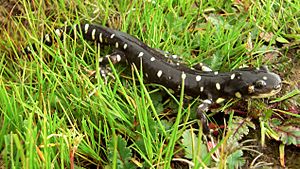
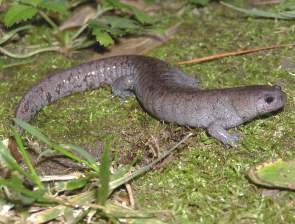
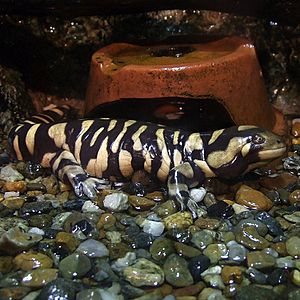
Order: Caudata Family: Ambystomatidae
- Ambystoma annulatum (Ringed Salamander)
- Ambystoma barbouri (Streamside Salamander)
- Ambystoma californiense (California Tiger Salamander)
- Ambystoma maculatum (Spotted Salamander)
- Ambystoma tigrinum (Tiger Salamander)
- Dicamptodon tenebrosus (Coastal Giant Salamander)
Amphiumidae
Amphiumas are long, eel-like salamanders that live in the southeastern United States. They have tiny legs and spend their lives in muddy water.
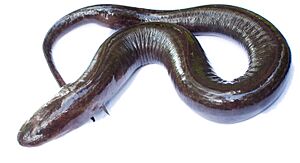
Order: Caudata Family: Amphiumidae
- Amphiuma means (Two-toed Amphiuma)
- Amphiuma tridactylum (Three-toed Amphiuma)
Cryptobranchidae
This family includes some of the largest salamanders in the world, often called "hellbenders." They are fully aquatic and have wrinkly skin to help them breathe underwater.
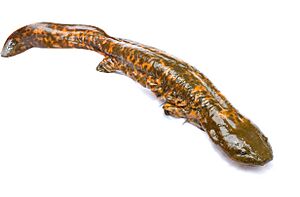
Order: Caudata Family: Cryptobranchidae
- Cryptobranchus alleganiensis (Hellbender)
Plethodontidae
This is the largest family of salamanders, known as "lungless salamanders." They don't have lungs; instead, they breathe through their skin and the lining of their mouths. This means they need to stay very moist.
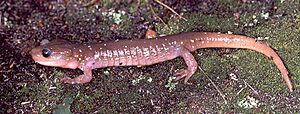
Order: Caudata Family: Plethodontidae
- Batrachoseps attenuatus (California Slender Salamander)
- Eurycea bislineata (Northern Two-lined Salamander)
- Gyrinophilus porphyriticus (Spring Salamander)
- Hemidactylium scutatum (Four-toed Salamander)
- Pseudotriton ruber (Red Salamander)
- Aneides aeneus (Green Salamander)
- Desmognathus fuscus (Dusky Salamander)
- Ensatina eschscholtzii (Ensatina)
- Plethodon cinereus (Red-backed Salamander)
- Plethodon jordani (Jordan's Salamander)
Proteidae
These salamanders are also fully aquatic and have feathery, external gills throughout their lives. They are sometimes called "mudpuppies." Order: Caudata Family: Proteidae
- Necturus maculosus (Common Mudpuppy)
- Necturus punctatus (Dwarf Waterdog)
Rhyacotritonidae
These are small salamanders found in the Pacific Northwest, often called "torrent salamanders" because they live in cold, fast-flowing streams. Order: Caudata Family: Rhyacotritonidae
- Rhyacotriton olympicus (Olympic Torrent Salamander)
Salamandridae
This family includes newts, which are a type of salamander. Many newts have rougher skin than other salamanders and some have bright colors to warn predators that they are toxic.
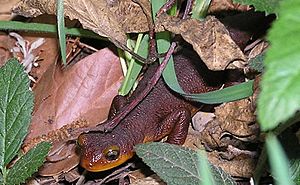
Order: Caudata Family: Salamandridae
- Notophthalmus viridescens (Eastern Newt)
- Taricha granulosa (Rough-skinned Newt)
- Taricha torosa (California Newt)
Sirenidae
Sirens are long, eel-like amphibians with only front legs and external gills. They live in slow-moving water and can even survive dry periods by burrowing in the mud. Order: Caudata Family: Sirenidae
- Siren lacertina (Greater Siren)
- Siren intermedia (Lesser Siren)
Frogs and Toads (Anura)
Frogs and toads are amphibians known for their powerful jumping legs and their loud calls. Frogs generally have smooth, moist skin and live near water, while toads often have drier, warty skin and can live further from water.
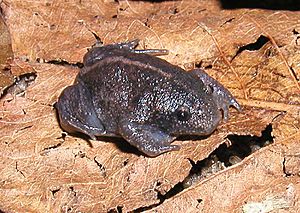
Ascaphidae
These are called "tailed frogs" because the males have a tail-like extension, which is actually part of their reproductive system. They live in cold, fast-moving streams. Order: Anura Family: Ascaphidae
- Ascaphus truei (Coastal Tailed Frog)
Bufonidae
This family includes "true toads." They are usually plump with short legs and warty skin. Many have glands behind their eyes that release toxins to protect them from predators.
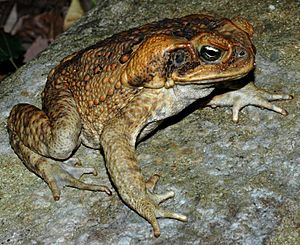
Order: Anura Family: Bufonidae
- Anaxyrus americanus (American Toad)
- Anaxyrus boreas (Western Toad)
- Anaxyrus fowleri (Fowler's Toad)
- Anaxyrus punctatus (Red-spotted Toad)
- Rhinella marina (Cane Toad - an introduced species)
Craugastoridae
This family contains many species of "rain frogs" or "direct-developing frogs." This means they don't have a tadpole stage; instead, tiny froglets hatch directly from the eggs. Order: Anura Family: Craugastoridae
- Craugastor augusti (Barking Frog)
Dendrobatidae
This family is famous for "poison dart frogs." While many are brightly colored and toxic in their native habitats (like Central and South America), the one found in the U.S. is an introduced species.
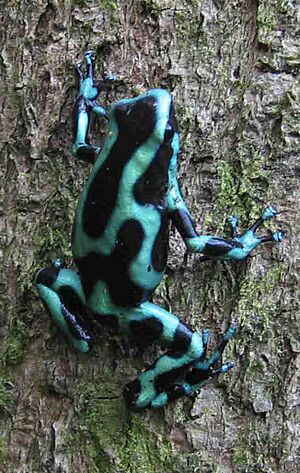
Order: Anura Family: Dendrobatidae
- Dendrobates auratus (Green and Black Poison Dart Frog - introduced to Hawaii)
Eleutherodactylidae
These are also "direct-developing frogs," meaning they skip the tadpole stage. Many species in this family are small and have loud calls.
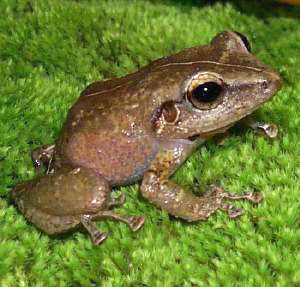
Order: Anura Family: Eleutherodactylidae
- Eleutherodactylus coqui (Common Coquí - introduced to Florida)
- Eleutherodactylus planirostris (Greenhouse Frog)
Hylidae
This family includes "tree frogs." They often have sticky toe pads that help them climb trees and other surfaces. Many are masters of camouflage. Order: Anura Family: Hylidae
- Acris crepitans (Northern Cricket Frog)
- Hyla cinerea (Green Tree Frog)
- Hyla versicolor (Gray Tree Frog)
- Osteopilus septentrionalis (Cuban Tree Frog - introduced)
- Pseudacris crucifer (Spring Peeper)
- Pseudacris regilla (Pacific Tree Frog)
- Litoria caerulea (White's Tree Frog - introduced)
Leptodactylidae
This family includes "tropical frogs" that are found in warmer climates. The species found in the U.S. is an introduced one.
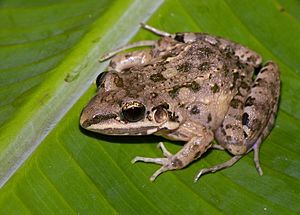
Order: Anura Family: Leptodactylidae
- Leptodactylus fragilis (Mexican White-lipped Frog - introduced)
Microhylidae
These are "narrow-mouthed toads." They are small, round-bodied frogs with tiny heads. They often eat ants and termites.
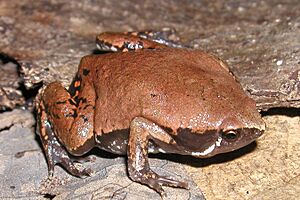
Order: Anura Family: Microhylidae
- Gastrophryne carolinensis (Eastern Narrow-mouthed Toad)
- Hypopachus variolosus (Sheep Frog)
Pipidae
This family includes "clawed frogs" and "surinam toads." They are fully aquatic and have flattened bodies. The species found in the U.S. is an introduced one.
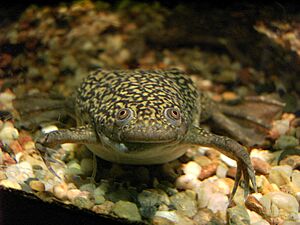
- Xenopus laevis (African Clawed Frog - introduced)
Ranidae
This family includes "true frogs." They typically have smooth skin, long legs, and live near water. Many are excellent jumpers.
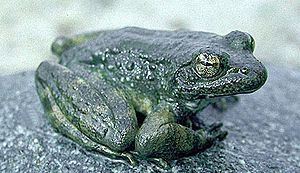
- Lithobates catesbeianus (American Bullfrog)
- Lithobates clamitans (Green Frog)
- Lithobates pipiens (Northern Leopard Frog)
- Lithobates sylvaticus (Wood Frog)
- Rana aurora (Northern Red-legged Frog)
- Rana boylii (Foothill Yellow-legged Frog)
- Rana draytonii (California Red-legged Frog)
Rhinophrynidae
This family has only one species, the "Mexican burrowing toad." It has a round body and a small head, and it's adapted for digging underground. Order: Anura Family: Rhinophrynidae
- Rhinophrynus dorsalis (Mexican Burrowing Toad)
Scaphiopodidae
These are "spadefoot toads." They have a hard, spade-like growth on their hind feet that helps them dig backwards into the soil. They often come out during heavy rains.

Order: Anura Family: Scaphiopodidae
- Scaphiopus holbrookii (Eastern Spadefoot)
- Scaphiopus hurterii (Hurter's Spadefoot)
- Spea hammondii (Western Spadefoot)
See also
 In Spanish: Anexo:Anfibios de Estados Unidos para niños List of amphibians native to the United States by state:
In Spanish: Anexo:Anfibios de Estados Unidos para niños List of amphibians native to the United States by state:
- List of amphibians of Alabama
- List of amphibians of Alaska
- List of amphibians of Arizona
- List of amphibians of Arkansas
- List of amphibians of California
- List of amphibians of Colorado
- List of amphibians of Connecticut
- List of amphibians of Delaware
- List of amphibians of Florida
- List of amphibians of Georgia
- List of amphibians of Hawaii
- List of amphibians of Idaho
- List of amphibians of Illinois
- List of amphibians of Indiana
- List of amphibians of Iowa
- List of amphibians of Kansas
- List of amphibians of Kentucky
- List of amphibians of Louisiana
- List of amphibians of Maine
- List of amphibians of Maryland
- List of amphibians of Massachusetts
- List of amphibians of Michigan
- List of amphibians of Minnesota
- List of amphibians of Mississippi
- List of amphibians of Missouri
- List of amphibians of Montana
- List of amphibians of Nebraska
- List of amphibians of Nevada
- List of amphibians of New Hampshire
- List of amphibians of New Jersey
- List of amphibians of New Mexico
- List of amphibians of New York
- List of amphibians of North Carolina
- List of amphibians of North Dakota
- List of amphibians of Ohio
- List of amphibians of Oklahoma
- List of amphibians of Oregon
- List of amphibians of Pennsylvania
- List of amphibians of Rhode Island
- List of amphibians of South Carolina
- List of amphibians of South Dakota
- List of amphibians of Tennessee
- List of amphibians of Texas
- List of amphibians of Utah
- List of amphibians of Vermont
- List of amphibians of Virginia
- List of amphibians of Washington (state)
- List of amphibians of West Virginia
- List of amphibians of Wisconsin
- List of amphibians of Wyoming

